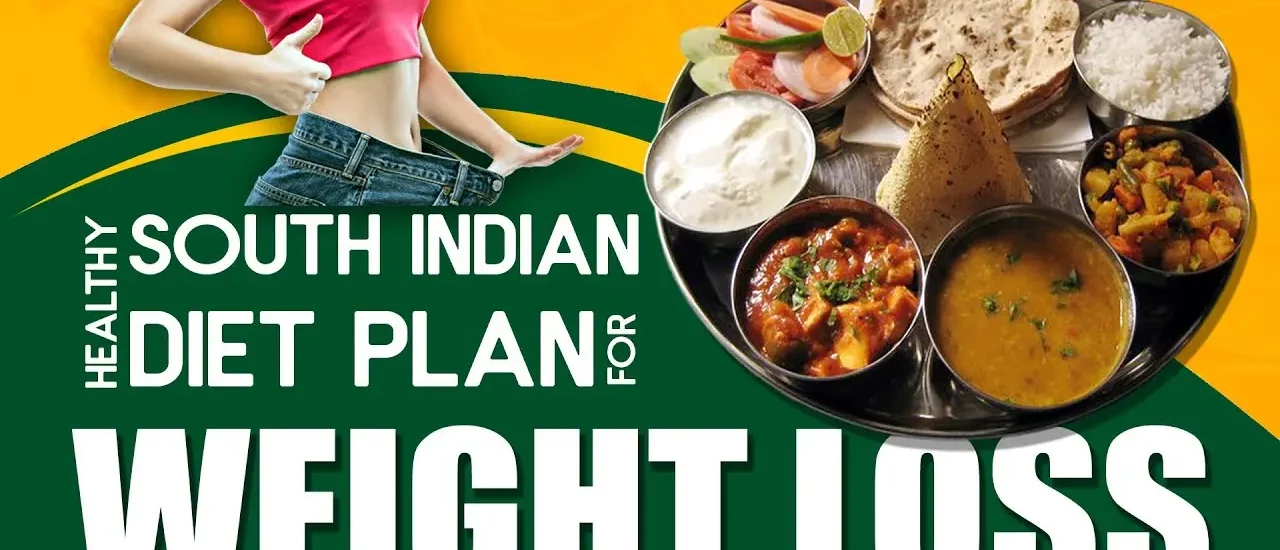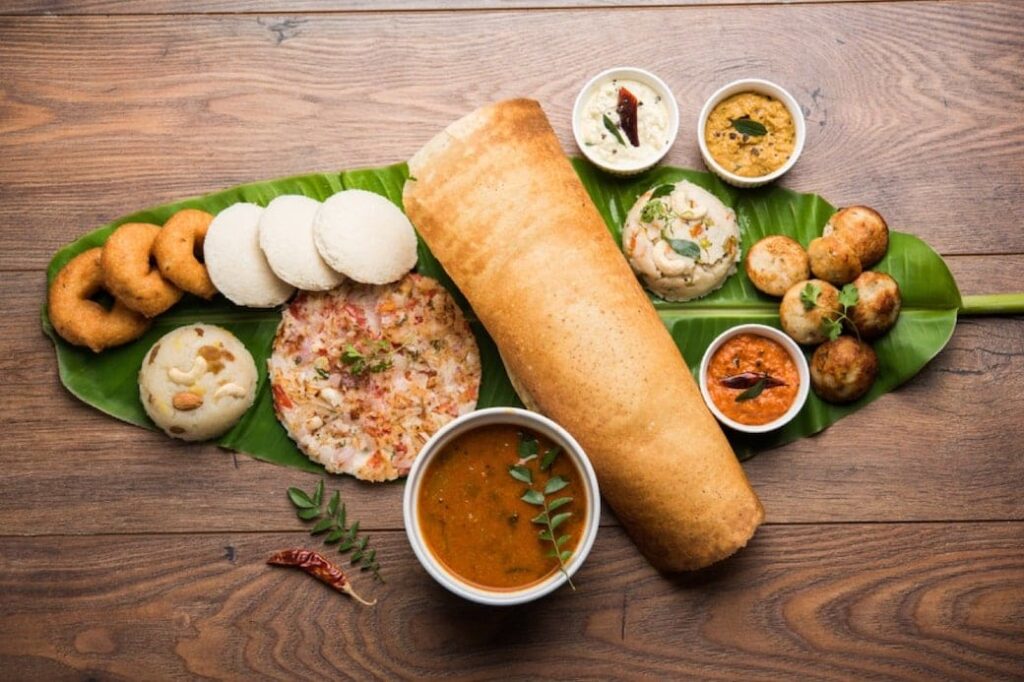

wordpress-seo domain was triggered too early. This is usually an indicator for some code in the plugin or theme running too early. Translations should be loaded at the init action or later. Please see Debugging in WordPress for more information. (This message was added in version 6.7.0.) in /home/sehatnagar.com/public_html/wp-includes/functions.php on line 6114
In today’s world, where health and wellness have become paramount, weight loss is also a common goal for many individuals. If you’re someone who enjoys the flavors of South Indian cuisine and wants to shed those extra pounds, you’re in luck. The South Indian diet offers a treasure trove of nutritious ingredients and traditional flavors that can be harnessed to create an effective and enjoyable weight loss journey. In this article, we will guide you through a comprehensive South Indian diet plan for weight loss, providing you with valuable insights and practical tips to help you achieve your goals while savoring the deliciousness of South Indian cuisine. So get ready to embark on a wholesome and flavorful path towards a healthier you.
South Indian cuisine is renowned for its vibrant flavors, aromatic spices, and diverse culinary traditions. It encompasses the states of Andhra Pradesh, Karnataka, Kerala, Tamil Nadu, and Telangana, each contributing unique elements to the overall tapestry of South Indian gastronomy.
Understanding the components and nutritional aspects of South Indian cuisine sets the stage for designing a well-balanced diet plan for weight loss. By harnessing the healthful elements and flavors of this cuisine, you can embark on a fulfilling journey towards achieving your weight loss goals.
Here is a reference plan for a South Indian diet for weight loss. Remember to adjust portion sizes and specific food choices based on your individual calorie requirements and dietary needs:
Breakfast:
Mid-Morning Snack:
Lunch:
Afternoon Snack:
Dinner:
Evening Snack:
Bedtime Snack:
Remember to include plenty of water throughout the day and adjust the portion sizes according to your individual needs. Additionally, incorporating regular physical activity into your routine will complement your weight loss efforts. It is advisable to consult a registered dietitian or healthcare professional for a personalized diet plan based on your specific requirements and health conditions.
When it comes to weight loss, a well-designed diet plan is essential. Here are the key principles to keep in mind when creating a South Indian diet plan for weight loss:

When following a South Indian diet plan for weight loss, incorporating a variety of nutritious foods is key. Here are some foods that should be included in your diet:
Whole Grains: Opt for whole grains like brown rice, millets (such as ragi, foxtail millet, and pearl millet), quinoa, and whole wheat products like roti and chapati. These provide complex carbohydrates and fiber, offering sustained energy and keeping you feeling fuller for longer.
Vegetables: South Indian cuisine offers a wide range of vegetables to choose from. Include plenty of colorful and non-starchy vegetables like spinach, kale, broccoli, cauliflower, carrots, beans, and bell peppers. These are low in calories, high in fiber, and packed with vitamins, minerals, and antioxidants.
Fruits: Incorporate a variety of fresh fruits into your daily diet. Choose seasonal fruits like mangoes, papayas, bananas, oranges, apples, and pomegranates. Fruits provide natural sweetness, fiber, and essential vitamins and minerals while being low in calories.
Dairy and Dairy Alternatives: Include low-fat dairy products like yogurt, buttermilk, and cottage cheese in moderation. If you follow a plant-based diet, opt for dairy alternatives like almond milk or soy milk fortified with calcium and vitamin D.
Healthy Fats: Include sources of healthy fats such as nuts (almonds, walnuts, pistachios), seeds (flaxseeds, chia seeds), and avocados. These provide essential fatty acids, promote satiety, and support overall health.
Herbs and Spices: South Indian cuisine is rich in spices known for their health benefits. Include spices like turmeric, cumin, coriander, cinnamon, and ginger in your cooking. These spices not only enhance flavor but also offer anti-inflammatory and metabolism-boosting properties.
When following a South Indian diet for weight loss, it’s important to keep in mind several tips and precautions. First, practice portion control to avoid overeating. Be mindful of your serving sizes and consider using smaller plates and bowls. Additionally, aim for balanced meals that include a mix of carbohydrates, proteins, and healthy fats to provide essential nutrients and keep you satisfied. Focus on incorporating fiber-rich foods like whole grains, lentils, legumes, and vegetables, as they aid digestion, promote satiety, and help maintain stable blood sugar levels.
Choose healthy cooking methods such as steaming, grilling, or baking instead of deep-frying to reduce unnecessary calorie intake. It’s crucial to limit the consumption of added sugars found in sweets, desserts, and sugary beverages, and instead, choose natural sweetness from fruits. Staying hydrated by drinking plenty of water throughout the day is essential for overall health and weight loss. Practice mindful eating by eating slowly and paying attention to your body’s hunger and fullness cues. Combine your diet plan with regular physical activity to enhance your weight loss efforts. Consider consulting a registered dietitian to personalize your plan based on your specific needs and goals. Lastly, monitor your progress, focusing on overall well-being rather than just the number on the scale, and make gradual, healthy changes for sustainable weight loss.
The key to healthy weight loss is to consume foods that are high in nutrients and low in calories. South Indian cuisine offers a range of traditional foods that fit this criterion and are perfect for weight loss. This section will discuss some of the top South Indian foods that can aid in weight loss.
Idli, or steamed rice cake, is a famous dish made from fermented rice and urad dal batter. It is a staple breakfast item in South India and is low in calories and nutrient-rich. One idli contains only around 39 calories, making it an excellent weight-loss choice. What’s even better is that you can make idlis with a wide variety of cereals, millets and dals and can improve on its nutrition profile. You can even add veggies to your idli batters.
Dosa is another popular breakfast item made from fermented rice and urad dal batter. It is a thin, crispy crepe typically served with coconut chutney and sambar. Dosa is low in calories and protein-rich, making it a fantastic food choice for weight loss especially when made at home with minimal oil..
Upma is a savoury porridge made from semolina, vegetables, and spices. It is a light, healthy dish for breakfast or mid-day snacks. Upma is rich in fibre and low in calories. That makes it an excellent food for weight loss.
Pongal is a rice dish made from rice, moong dal, and spices. It is a popular breakfast item in South India and is low in calories and protein-rich. Pongal is also fibre-rich, making it an excellent weight-loss food choice.
Sambar is a lentil-based vegetable stew typically served with rice or idli. It is protein- and fibre-rich and low in calories. That makes it a suitable food choice for weight loss.
Rasam is a tangy soup made from tamarind, tomato, and spices. It is low in calories and nutrient-rich, making it an excellent addition to a weight-loss diet. Rasam also has medicinal properties that aid digestion and boost immunity.
Incorporating these traditional South Indian foods into your diet can aid in weight loss and promote overall health. These low-calorie foods are rich in nutrients, fibre and protein. Hence, they suit anyone looking to shed a few extra pounds.
Poha, also known as flattened rice or beaten rice, is not only a delicious breakfast option but can also be a beneficial addition to a weight loss diet. However, poha is made from flattened rice flakes that are light, easy to digest, and low in calories. It is a popular choice among individuals looking to shed excess pounds due to its high fiber content and nutrient density.
Is Papaya Good For Weight Loss? Papaya Health Benefits
Can You Drink Water During Intermittent Fasting? What Studies Suggest
Is Mango Good For Weight Loss?
A South Indian diet plan for weight loss can be both nutritious and delicious. By combining traditional flavors with a mindful approach to nutrition, individuals can achieve their weight loss goals while still enjoying the richness of South Indian cuisine. Remember, adopting a sustainable and balanced lifestyle is key to long-term success.
A: A South Indian diet plan for weight loss is a dietary approach that incorporates traditional South Indian dishes and ingredients while focusing on portion control, balanced nutrition, and healthy cooking methods. It emphasises including vegetables, spices, whole grains, and lean proteins in the diet.
A: Yes, a South Indian diet can help in weight loss. It offers a wide variety of nutritious low-calorie foods high in fibre, which can promote satiety and reduce overall calorie intake. Additionally, using spices in South Indian cooking can benefit weight management and metabolism.
A: The key components of a South Indian weight loss diet plan include:
A: In a South Indian weight loss diet, it is advisable to limit the consumption of high-calorie ingredients like coconut, oil, and ghee. Additionally, deep-fried and heavily processed foods should be avoided or consumed in moderation.
A: The calorie intake in a South Indian weight loss diet can vary depending on individual needs and goals. It is essential to focus on portion control and balance the overall calorie intake with energy expenditure for weight management. Consulting a healthcare professional or registered dietitian can help determine the appropriate calorie range for an individual.
A: While a South Indian weight loss diet can contribute to weight loss, regular exercise or physical activity is recommended for optimal results. Exercise helps burn calories, maintain muscle mass, and boost metabolism, supporting weight loss efforts.
A: The timeframe to see weight loss results on a South Indian diet plan can vary depending on factors such as individual metabolism, adherence to the diet plan, exercise routine, and overall lifestyle. Weight loss is a gradual process, and being patient and consistent with the diet and lifestyle changes is essential. Sustainable results can typically be seen over weeks to months.
A: Some common mistakes to avoid while following a South Indian weight loss diet include overeating, consuming excessive oil or high-calorie ingredients, relying on deep-fried foods, neglecting portion control, and lacking consistency. Practising mindful eating, choosing healthier cooking methods, and staying consistent with the diet plan can help avoid these mistakes.
A: A South Indian weight loss diet can be customised to accommodate specific dietary restrictions or preferences. It is essential to consult a healthcare professional or registered dietitian who can provide personalised advice and help modify the diet plan accordingly.
A: A South Indian weight loss diet is generally considered safe and beneficial for overall health. However, it is crucial to be mindful of individual allergies, intolerances, or medical conditions requiring specific dietary considerations. Consulting a healthcare professional or registered dietitian is advisable to address potential health risks and ensure the diet plan suits individual needs.